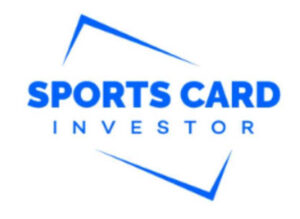
Strategies to Flip Your Way to the Top
This guest post came through our Article Submission Program. Thoughts and opinions are those of the author.
Introduction:
In this article, I will be discussing strategies I implement to help build my collection.
The wonderful thing about our hobby is that it has something called multiple entry points. No matter your financial situation, you can enter as a collector, investor, or both at any income point. Not everyone can afford to chase the premier cards of the hobby’s biggest stars. I love going on eBay and glamouring over cards that are PSA 10’s of some of the hobby’s hottest players. They often come highly recommended from an investment standpoint by some of today’s biggest market minds. However, if you are in the majority from a financial standpoint, it is just not feasible to invest in these cards. So how do you get to a point to start making money or being able to acquire high-end cards?
I ask myself this question often on my journey as a collector and investor. A few things have proven to expedite the process with a limited income. To give you a price point, I currently have about $100 a month to use on sportscards, which can fluctuate with many things that come with life. When I say fluctuate, I mean it’s usually affected negatively due to family and life expenses. Nonetheless, it is an average.
Strategy 1: Invest in raw cards that follow similar trends.
This is a strategy I often use when looking at cards to invest in. I look at some of today’s biggest stars and what their particular brand of cards are doing. I then take stars that could be at those levels in the very near future. They are stars but haven’t yet reached superstar status. For example, Giannis Antetokounmpo’s NBA Hoops RC base raw recently sold for $157.50. I then look at other star players to compare prices for the same brand card, such as Jayson Tatum’s NBA Hoops RC base, that recently sold for $7. If the difference in price is substantial, I will invest in the raw cards of those players. Not all cards you invest in this way will yield significant returns because not all players will become superstars or generational players. You will also have to wait several months to years to see substantial income in most cases.
Strategy 2: Invest in cards that are worth grading.
Investing in sports cards that are raw and then grading them is a very quick way to see significant returns on investments. It makes this strategy a no brainer. However, it is tough to know how cards will grade and yet grade at a PSA 10 to see a significant return. eBay is a huge platform to find all sorts of cards. I have bought cards that do grade as PSA 10’s from eBay, and it is possible but takes a lot of time, research and patience.
A strategy I currently employ has worked out exceptionally well in yielding high returns on cards, and that is using COMC. COMC or Check Out My Cards is one of the largest sports card consignments in the world. Sign up is free, and you get to browse millions of cards that were sent in by collectors just like you and me.
Anyway, they do raw card reviews that some card submitters use. The card is then assigned a grade that aligns with grades of the major grading companies PSA and BGS (Gem mint, mint or better, mint, nm-mint+, etc.). There is a quick and easy way to browse each sport and see which cards have been reviewed by COMC. I usually buy cards that have been reviewed as Mint or Better. Most of the time, you can acquire these cards for lower prices than actual graded versions of the same card. I compare what the mint or better card is selling for on COMC with what the same PSA 10 is selling for on eBay to decide if it is worth the investment. Most of the cards I have bought as mint or better do grade as PSA 10s; however, a few do come back PSA 9’s. This strategy has inflated my funds for investing in cards. It also takes the guesswork out of the condition of a card or scouring pictures on eBay to see if the card is mint. The only drawback is not every card is reviewed this way by COMC because it costs a small fee. You can also acquire cards on COMC and have them reviewed to see what review grade they would receive for a small fee. To learn how to filter reviewed cards on COMC follow the tutorial.
Conclusion:
Whether or not you have a limited income when it comes to sports card collecting and investing, there are strategies you can use to invest and collect the cards you want quickly. Happy collecting and investing!
Excellent article highlighting two strategies used to have a low buy-in point on investment cards. Do you have similar approaches to find unique buy-in points?
Ready to take your sports card investing to the next level? Join our Membership Program now for card picks, analytics, premium community access and much more!






